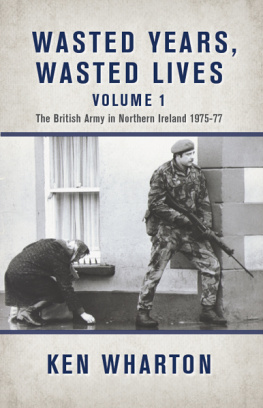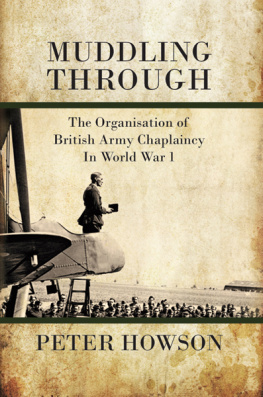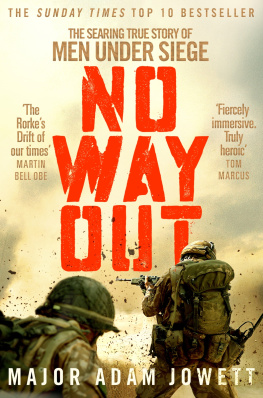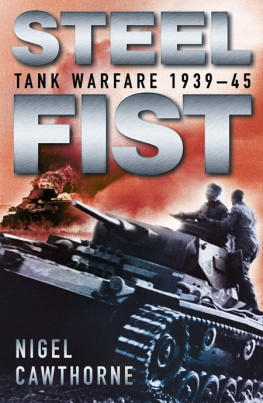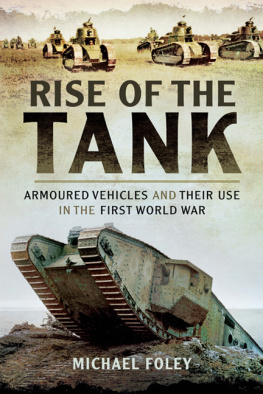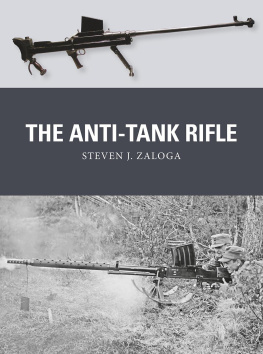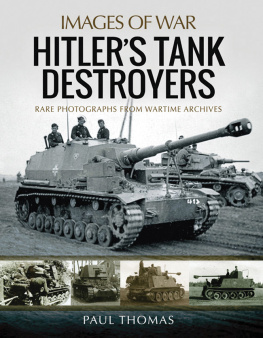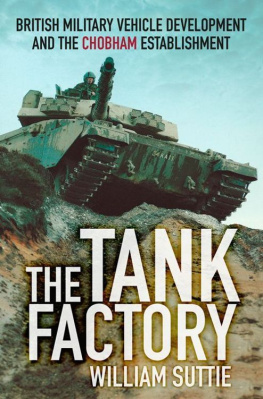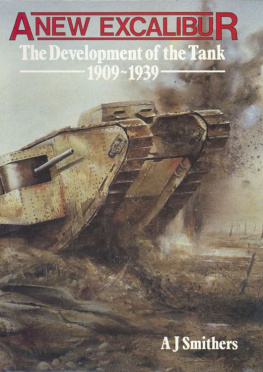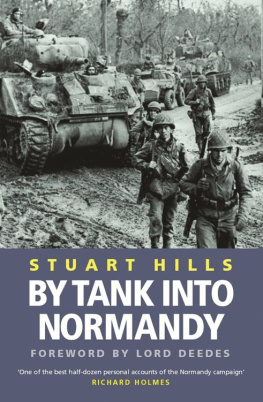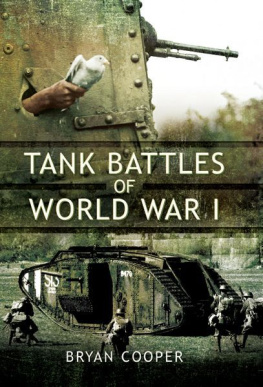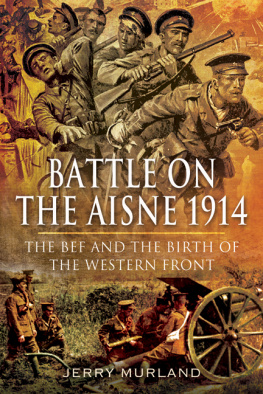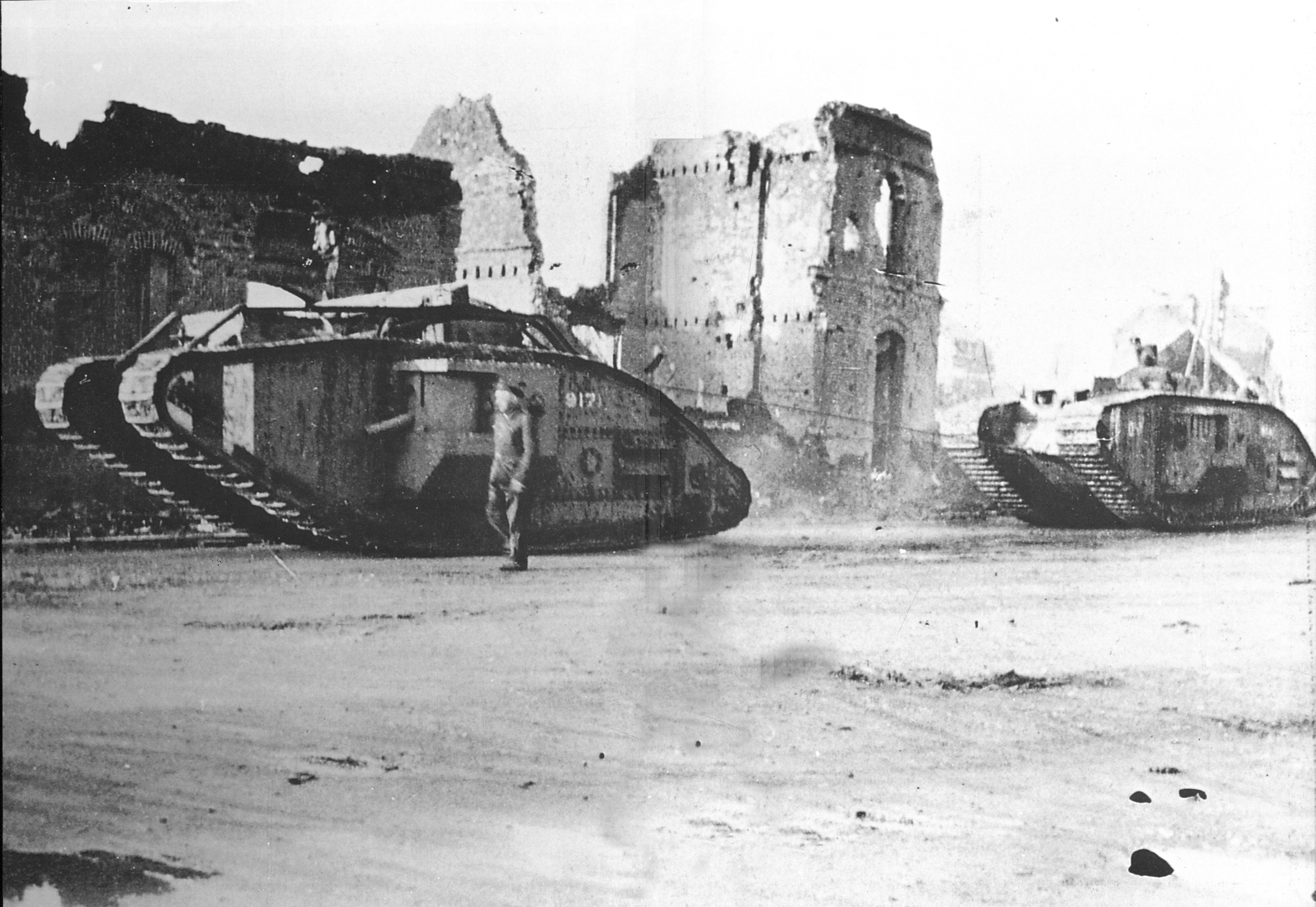ANYBODY WHO ATTEMPTS such a book as this must first visit the Tank Museum at Bovington and seek the benevolence of those in charge of that admirable institution. There I received help far beyond anything I might have expected. The late Lieut-Colonel Kenneth Hill and the present Librarian, Mr Fletcher, did far more than merely answer questions put by an imperfectly educated stranger; they provided information from their important (and underused) archives that I did not know existed. David Fletcher, author of many books and probably the worlds best informed man on the subject, most kindly found the time to direct me to a number of papers containing essential information that could not be found elsewhere. That done, he initiated me into the workings of Tanks of the first generation. I cannot sufficiently thank him.
On published material, I gratefully acknowledge permissions given to me to draw upon books and papers still under copyright. To Colonel A. J. Aylmer and the Estate of the late Major-General Sir Edward Spears for quotations from Prelude to Victory. To A. P. Watts Ltd. and the Estate of Lieut-Colonel Sir Albert Stern for those from Tanks: the Log-book of a Pioneer. To Newnes Books, a division of the Hamlyn Groups Ltd, for leave to quote from Mr Winston Churchills The World Crisis 19111918. To Mr Roderick Suddaby of the Imperial War Museum for telling me of the whereabouts of the Stern Papers and to the trustees of The Liddell Hart Centre for Military Archives at Kings College London for making me free of them; my particular gratitude goes to Dr Patricia J. Methven of that Centre for her unfailing help.
Several gentlemen of military antecedents have been good enough to read and comment upon the original typescript, now by no means the same as when it was first submitted. They know of my feelings towards them; I do not mention their names for there is no reason why they should share the blame for such criticisms as are bound to be made.
Last, my thanks to Philippa Arnott who turned a mass of heavily amended paper into the fairest of typescripts, and to Bill Oakes, who spawned the idea of this book.
Acknowledgements to illustrations
Photographs obtained from the Imperial War Museum appear on the following pages: Front end-paper, title-page, 24, 68, 95, no, 133, 136, 137, 150, 166, 172, 195, 196.
From the Bill Oakes collection: pages 80, 81, 93, 99, 103, 107, 165, 167, 170, 171, 174, 177, 182, 185, rear end-paper.
From various books: pages 19, 20, 25, 28, 37, and from War Monthly, page 125 (both subjects).
All the remainder are from the Tank Museum at Bovington.
SOMEBODY I wish I could remember who it was once said that if Napoleon Bonaparte had only put up a reward of a million francs for the invention of a weapon superior to the flint-lock musket he would have become master of the world. In this there is much truth, but only because Napoleon controlled his War Office. It would have been technically possible to have put a percussion rifle, breech-loading like the Ferguson, into the hands of French soldiers in the early 1800s with incalculable results.
In England we arrange matters differently. It would have been equally possible to have produced a tracked and armoured vehicle driven by an internal combustion engine in the early 1900s. The inventor, however, would not have been rewarded. He would have been lucky to avoid a visit by two doctors accompanied by men in white coats. The story lingers of the Nottingham plumber who submitted designs of just such a machine; they were, naturally, placed in a War Office file with a minute on them saying, The mans mad.
It seems impossible to pick up any book on the subject without encountering the trite observation that nobody invented the tank. John Charteris, Sir Douglas Haigs Director of Military Intelligence was, more often than not, wrong in his conclusions but here he hit the nail on the head. The idea of a mobile strong-point, out of which the tank developed, probably occurred to most minds after our first experiences of attacking strongly entrenched positions. I first heard it suggested by an Intelligence Corps officer as early as the Battle of the Aisne. His idea took the form of a group of men carrying a section of bullet-proof shield. Very elementary calculations of weight proved that idea impracticable and the suggestion of using the Caterpillar tractor, which had been experimented with at Aldershot in 1914, immediately arose. I remember discussing the possibility of this with Colonel Swinton in 1914. But it was so obvious a development that it must have occurred simultaneously in many regimental and Staff messes.
That the Army had fared as well as it had under a Liberal Government was due entirely to one man, Richard Burdon Haldane. Even so, it did not fare well. The Navy, the sure shield, got, however grudgingly, its Dreadnoughts, its turbines and its big guns. The Army, up to 1914, was still Wolseleys army. It was given a superb rifle, better field guns and sensible webbing equipment but that was about all. A man going into battle either walked or was carried by an animal. Should he and his fellows need to dig a hole in the ground they did it in the same way and using the same tools as the builders of the Great Wall of China and the Pyramids of Egypt. And this at a time when mechanical and electrical engineering had reached a degree of skill not far behind that of today. The steam engine was obsolescent but the petrol and Diesel ones were widely used and of high efficiency. British engineers were held in respect everywhere; but nobody asked them to take an interest in military affairs. These were not for civilians, compendiously regarded by the highest military authorities as outsiders and not to be trusted.
Sir Arthur Conan Doyle was possessed of a fertile imagination allied to robust common sense. His articles in the Strand Magazine, foretelling exactly what would happen when the Germans unleashed their submarines, were regarded as highly entertaining. When, early in the war, he buttonholed Mr Montagu at the Ministry of Munitions to demand the making of some form of shield he found himself pushing on an open door. Sir Arthur, there is no use your arguing here, for there is no one in this building who does not know that you are right. The whole difficulty lies in making the soldiers accept your views. When all was over Sir Arthur wrote of it again. We can never be grateful enough to the men who thought out the Tank, for I have no doubt at all that this product of British brains and British labour won the war, which would otherwise have ended in a peace of mutual exhaustion. Churchill, dEyncourt, Tritton, Swinton and Bertie Stern, these were in sober fact, divide the credit as you may, the men who played a very essential part in bringing down the giant. Even the well-informed Conan Doyle seems to have been unconscious of the existence of a man quite as important as any of these. If Walter Gordon Wilson meant nothing to him it is hardly surprising that most people never heard of him. Yet, but for him there would have been no tank. Not, at any rate, in 1916.



